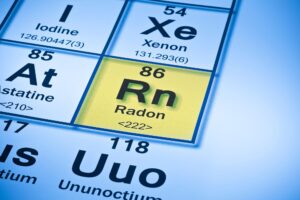Defra statistics shows year-on-year levels of six major air pollutants fell in 2013, partly due to decline in natural gas prices
Defra statistics released today (December 18) show year-on-year levels of six major air pollutants fell in 2013, continuing the long term decrease of the pollutants in the UK.
Levels of nitrogen oxides, sulphur dioxide, non-methane volatile organic compounds (NMVOCs), ammonia and particulate matter (both PM2.5 and PM10) — all six of the pollutants monitored for Defra’s annual statistical release — declined slightly in 2013 compared to the previous year.
Energy production and maufacturing are the major sources of sulphur dioxide emissions in the UKProduced by air quality consultants Ricardo-AEA on behalf of Defra and the Scottish and Welsh Governments, the ‘Emissions of air pollutants in the UK 1970-2013’ shows that nitrogen oxides and sulphur dioxide levels had the largest annual reductions.
The reasons for recent reductions in sulphur dioxide and nitrogen dioxide between 2012 and 2013 are attributed to a decline in the market price of natural gas leading to less coal being used for power generation. Also, some coal power stations reached the end of their working lifetime and were decommissioned.
Sulphur dioxide levels fell by 10.6% compared to the previous year, returning to a similar level to those observed in 2011. The main source in of this pollutant is from combustion in energy production and transformation (52% in 2013) and combustion in manufacturing industries (28%).
However, the rate of reduction of sulphur dioxide has slowed since large decreases seen in the 1990s and has remained level since 2009 at around an average of 0.41 million tonnes.
Particulates
In addition, nitrogen oxides also fell in 2013 by just below 5% compared to the previous year, while PM10 returned to 2011 levels with an annual fall of 1.6% in 2013.
Meanwhile, the remaining three pollutants monitored for the release — ammonia, PM2.5 and NMVOCs — all saw decreases of between 0.8% and 2.5% in 2013.
Graph from the Defra/Ricardo-AEA statistical release showing trends of the six pollutants 1970-2013 (click to enlarge)However, Ricardo-AEA reports that the contribution of emissions from domestic wood combustion to total PM10 and PM2.5 has increased over recent years — with levels at approximately 15,000 tonnes of PM10 and 14,000 tonnes of PM2.5 in 2013.
The statistics show that the UK continues to meet international and European Union emissions ceilings for ammonia, nitrogen oxides, NMVOCs and sulphur dioxide for 2010 onwards.
The UK has also signed up to the revised Gothenburg protocol agreeing to reduce PM2.5 emissions in 2020 by 30% compared to 2005 levels.
The figures in the Defra National Statistics Release come from the National Atmospheric Emissions Inventory (NAEI) for 1970 to 2013, produced for Defra and the devolved administrations by Ricardo-AEA.
According to Defra, emissions of other air pollutants not covered in today’s release will be available from April 2015 from the NAEI website.











Leave a Reply